In the Ectodermal dysplasia it is a group of genetically determined malformations of tissues and body parts that arise from the ectoderm. The common abbreviation for ectodermal dysplasia is ED. The term stands for a wide range of diseases and pathological disorders, especially of the nails, hair, skin, sweat glands and teeth. Ectodermal dysplasia occurs, for example, in Ellis-van-Creveld syndrome, Christ-Siemens-Touraine syndrome, Hay-Wells syndrome and Goltz-Gorlin syndrome.
What is ectodermal dysplasia?

© designua - stock.adobe.com
Ectodermal dysplasia summarizes various diseases and pathological phenomena that result from a disorder of the ectoderm. This is what is known as the outer cotyledon. The ectoderm is the origin of various components and tissues in the body, such as hair, nails and teeth.
Ectodermal dysplasia is divided into two categories. In type 1, the sick person has abnormalities in at least two different elements that arise from the ectoderm. Type 2 of ectodermal dysplasia manifests itself in malformations of teeth, nails or hair and an additional anomaly in other areas of the body such as lips, ears or soles of the feet.
In general, the causes of ectodermal dysplasia are genetic in nature, so that the disease is fixed in the patient from birth. The inheritance options are different and vary from case to case. An autosomal dominant, an x-chromosomal dominant and recessive inheritance are possible.
The prevalence of ectodermal dysplasia is estimated to be around 7 in 10,000. To date, over 150 different manifestations of the disease are known. Ectodermal dysplasia is associated with a variety of pathological syndromes.
These include, for example, Limb-Mammary Syndrome, Rosselli-Gulienetti Syndrome, Ladda-Zonana-Ramer Syndrome and Rapp-Hodgkin Syndrome. Ectodermal dysplasia also occurs in various forms in Zlotogora-Ogur syndrome, oligodontic cancer predisposition syndrome and hypotrichosis with juvenile macular dystrophy.
causes
Based on the responsible genetic mutations, ectodermal dysplasia can be divided into various groups. According to the inheritance pattern, there are various syndromes within the framework of which ectodermal dysplasia appears.
In the case of x-linked inheritance, ectodermal dysplasia occurs, for example, in Christ-Siemens-Touraine syndrome. The autosomal recessive type is present, for example, in Clouston syndrome or Halal-Setton-Wang syndrome.
You can find your medication here
➔ Medicines against redness and eczemaSymptoms, ailments & signs
In the context of ectodermal dysplasia, the sick people suffer from various deformities of structures that originate in the outer cotyledon. Thus, the term “ectodermal dysplasia” is a collective term for various diseases that are genetic and manifest themselves in various syndromes. Ectodermal dysplasia manifests itself in different complaints, depending on the disease syndrome present.
However, what most syndromes have in common is that they have disorders of the nails, hair, sweat glands or the skin. Sometimes the abnormalities also affect the soles of the feet or lips, for example in the context of a cleft lip and palate. Due to ectodermal dysplasia, patients have congenital malformations, for example on the teeth or fingernails and toenails.
Typical diseases in which ectodermal dysplasia occurs are, for example, Hay-Wells syndrome, Pachyonychia congenita, Naegeli syndrome, AREDYLD syndrome, ANOTHER syndrome and OLEDAID syndrome. Ectodermal dysplasia also manifests itself in the Sensenbrenner Syndrome, Basan Syndrome, CHIME Syndrome and Setleis Syndrome.
In addition to malformations of structures such as nails or teeth, other complaints are also possible with ectodermal dysplasia. For example, some people suffer from hearing loss, blindness and sub-par intellectual skills. Sometimes malformations of the central nervous system or natal teeth occur.
In some people, ectodermal dysplasia manifests itself in the context of McGrath syndrome, EEM syndrome, Stoll-Alembik-Finck syndrome, tooth-hair-nail-finger-Palma syndrome and Schöpf-Schulz-Passarge syndrome . In addition, there are corresponding disorders in cranioectodermal and odonto-onycho-hypohidrotic dysplasia with malformations of the scalp. Typical disorders of ectodermal dysplasia are also expressed in tricho-oculo-dermo-vertebral syndrome, cerebellar ataxia and hypohidrotic ectodermal dysplasia with immunodeficiency.
diagnosis
The diagnosis of ectodermal dysplasia is usually made by different specialists working together. Because the affected body parts are often very different, for example with simultaneous malformations of the skin and teeth. Since ectodermal dysplasia is an umbrella term for numerous syndromes, it is often difficult to assign it to the respective disease syndrome.
Because the symptoms are partly similar, but are always different enough to form independent syndromes. A genetic analysis of the patient's DNA is important in order to identify the gene mutations present. The knowledge of the respective inheritance also facilitates the assignment to the corresponding syndrome.
Complications
With ectodermal dysplasia, very different malformations occur on the body, which complicate the patient's everyday life and can lead to complications. Mostly there are disorders in the sweat glands and hair. Malformations of the teeth and nails can also occur and lead to severe pain.
In addition, the affected person sometimes suffers from a reduced self-esteem because the malformations are visually noticeable. Most of the time, blindness and hearing loss also occur in the course of life, so that the person affected depends on the help of other people and cannot cope with everyday life on their own. As a rule, there is also a reduced intelligence and thus a retardation.
Because of the immune deficiency, those affected are more likely to get flu and other infections. It is not possible to carry out a causal treatment for the disease. If hair loss occurs, wigs can be used. Other malformations are corrected through surgical interventions and cosmetic treatments.
However, it is not possible to treat or prevent deafness and blindness. The quality of life is greatly reduced by the disease. In addition to the patient himself, the parents are also heavily burdened with psychological problems.
When should you see a doctor?
In the case of ectodermal dysplasia, close monitoring by the doctor is always necessary. If the deformities cause pain, deformities and other problems, the responsible doctor should be consulted. If there are signs of a secondary illness, a specialist must be consulted with the child who can clarify or rule out the suspicion. Ailments such as blindness, hearing loss or mental underdevelopment must be presented to the respective specialist.
If an accident occurs due to the condition of ectodermal dysplasia, the emergency services must be called immediately. In the case of less serious complications, the emergency medical service can first be asked for advice. In the long term, you should talk to the treating doctor about cosmetic and surgical options that can correct the malformations.
Depending on the symptoms, different cosmetic and surgical procedures come into question. Orthodontic treatment can be carried out in the case of severe deformities of the teeth, while hair disorders can be concealed with wigs. You should consult your doctor regularly to discuss these measures alone.
Doctors & therapists in your area
Treatment & Therapy
A causal therapy for ectodermal dysplasia is not yet practicable at the present time. Because the various syndromes are genetically determined defects that medicine currently has no influence on. However, there are numerous symptomatic treatment options for ectodermal dysplasia, depending on the syndrome present.
Numerous malformations can be eliminated or alleviated, for example, through cosmetic and surgical procedures. In the case of severe deformities of the teeth, for example, orthodontic treatment is carried out. If the nails are defective, surgical interventions are an option. Disturbances in the growth of the scalp hair can usually be concealed with wigs.
Outlook & forecast
All forms of ectodermal dysplasia are chronic diseases. So there is no cure possible. The further prognosis depends primarily on the type of ectodermal dysplasia. The course of the disease is fundamentally dependent on environmental influences as well as on certain genetic factors. However, if those affected in infancy and early childhood are treated quickly and adequately, at least most forms of ectodermal dysplasia can have a normal life expectancy.
However, if severe respiratory infections, periods of overheating or other serious complications occur in early childhood, certain restrictions and development delays can occur. An early state of overheating, in which the appropriate countermeasures were not taken quickly enough, can cause brain damage, for example, which can subsequently lead to delays in mental and / or motor development.
Depending on the surgical interventions performed during childhood, additional oral surgery may be necessary in adulthood with dentomaxillary abnormalities. Regardless of this, those affected do not have to live with any further restrictions in adulthood.
You can find your medication here
➔ Medicines against redness and eczemaprevention
The cause of ectodermal dysplasia cannot be prevented with the current state of medical knowledge.With the help of therapy measures adapted to the individual case, numerous patients still achieve a high quality of life.
Aftercare
In the case of this disease, measures or options for follow-up care usually prove to be relatively difficult or even not possible at all. First and foremost, rapid and, above all, early detection and diagnosis of the symptoms must be carried out so that further complications or further worsening of the symptoms are avoided. Self-healing cannot occur either, so that an early diagnosis always has a positive effect on the further course of the disease.
Since this disease is also a genetic cause, a genetic test can also be carried out if you want to have children. This may prevent the disease from being passed on to children. The treatment of this disease is done with the help of surgical interventions.
After such procedures, the person concerned should definitely relax and take care of his body. Exertion or stressful activities should be avoided. Should there be any discomfort to the nails or hair, a doctor should be consulted immediately so that treatment can be carried out quickly. This disease does not have a negative impact on the life expectancy of the person affected.
You can do that yourself
Patients with hyperthermia must take care not to find themselves in situations in which they are exposed to uncontrolled heat in their daily environment.
It is therefore advisable not only to wear special cooling vests and hats for those affected, but also to think about living in climatically more favorable regions, which are characterized by year-round absence of heat peaks. Regular hydration of cool drinks as well as wearing damp clothing can still contribute to a welcome cooling even in warmer areas.
Regular, cold showers, avoidance of sport in childhood and regular use of moisturizing eye drops are just a few of the many everyday measures that lead to noticeable alleviation of symptoms.
The high rate of malformations can be counteracted by appropriate aesthetic rehabilitation measures with the help of dentures. Correcting the jaw misalignments that are often associated with this leads to clearer pronunciation, improved chewing behavior and a visually enhanced appearance, which in turn results in an increased quality of life.
Speech therapy help can effectively treat the speech and articulation disorders that often occur in connection with ectodermal dysplasia and help to increase self-esteem and social skills.
In order to stabilize oneself psychologically and to gain a maximum of quality of life in spite of all the impairing symptoms of the illness, some self-help groups offer assistance in dealing with the illness on a daily basis as well as exchange with those who are also affected.

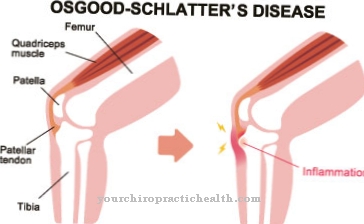

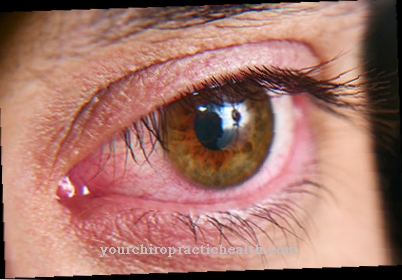
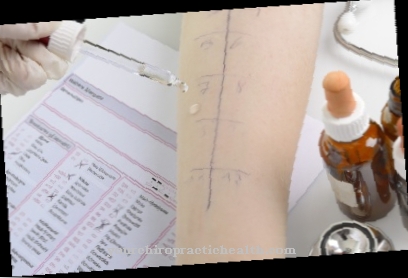
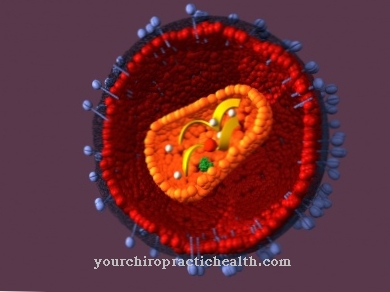
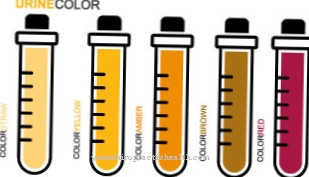

















.jpg)



